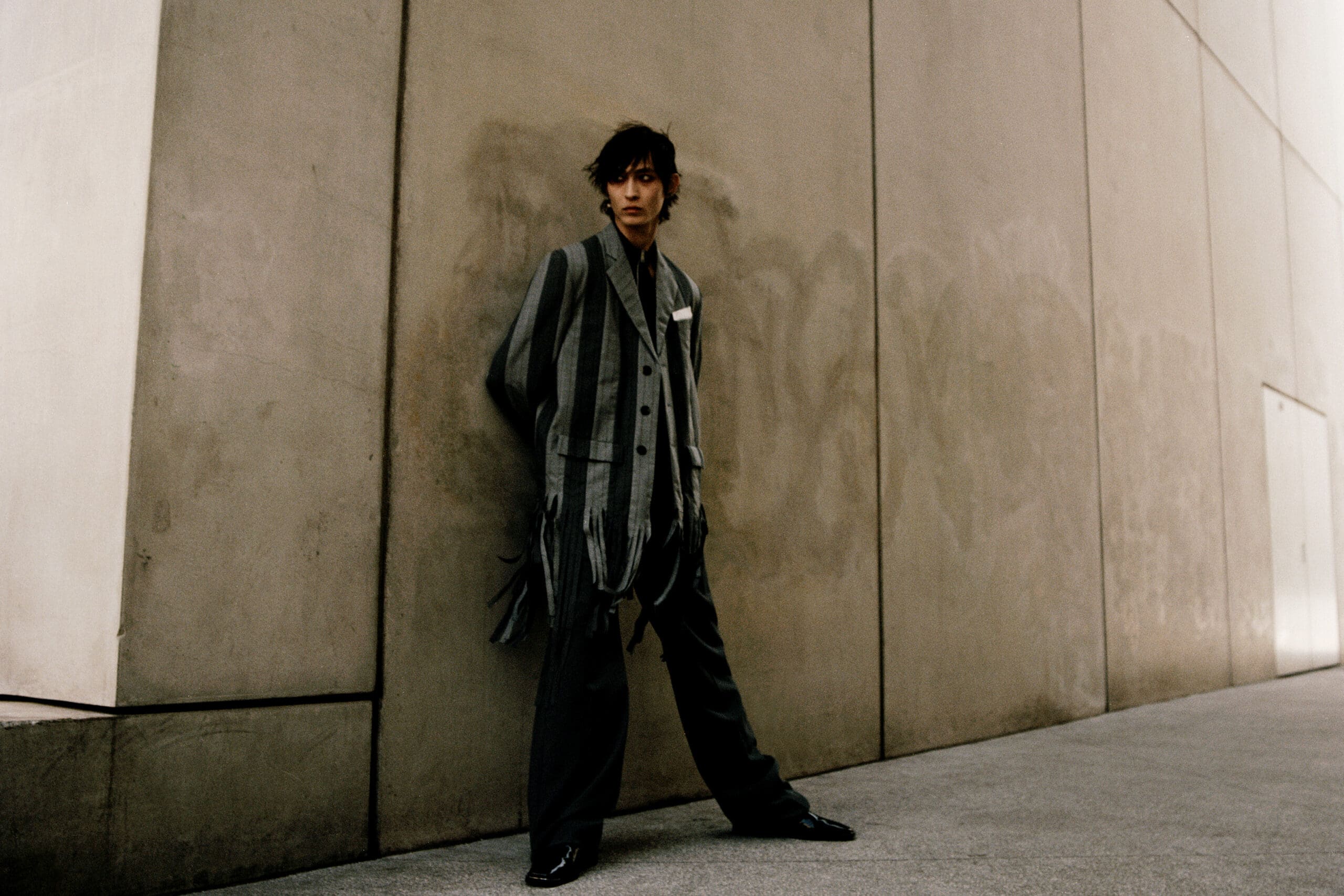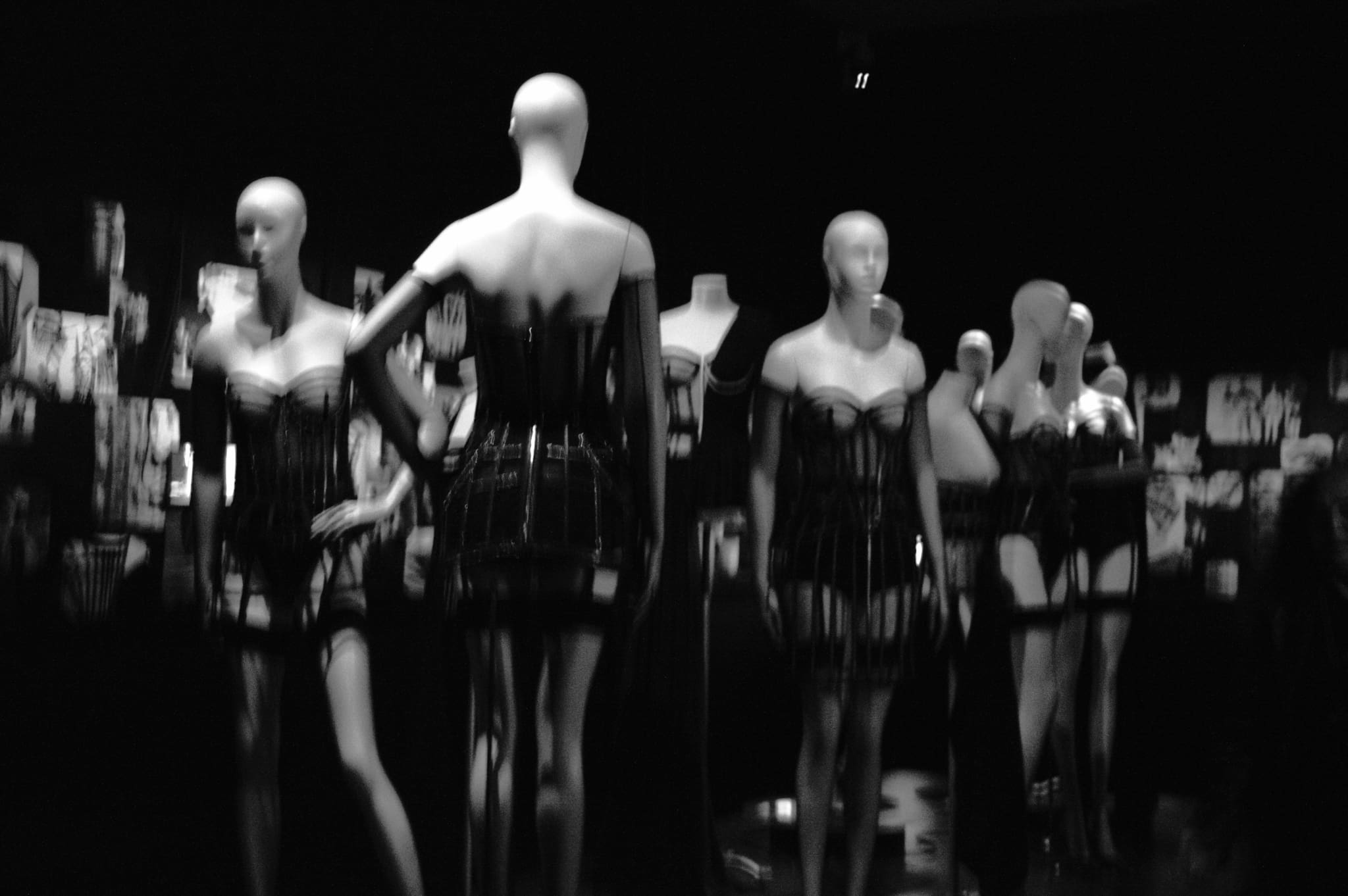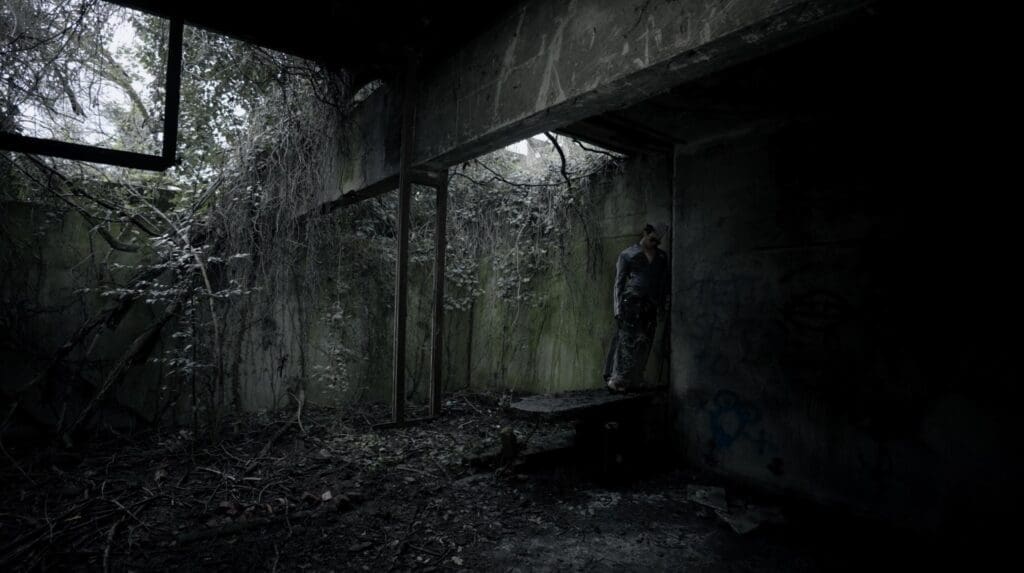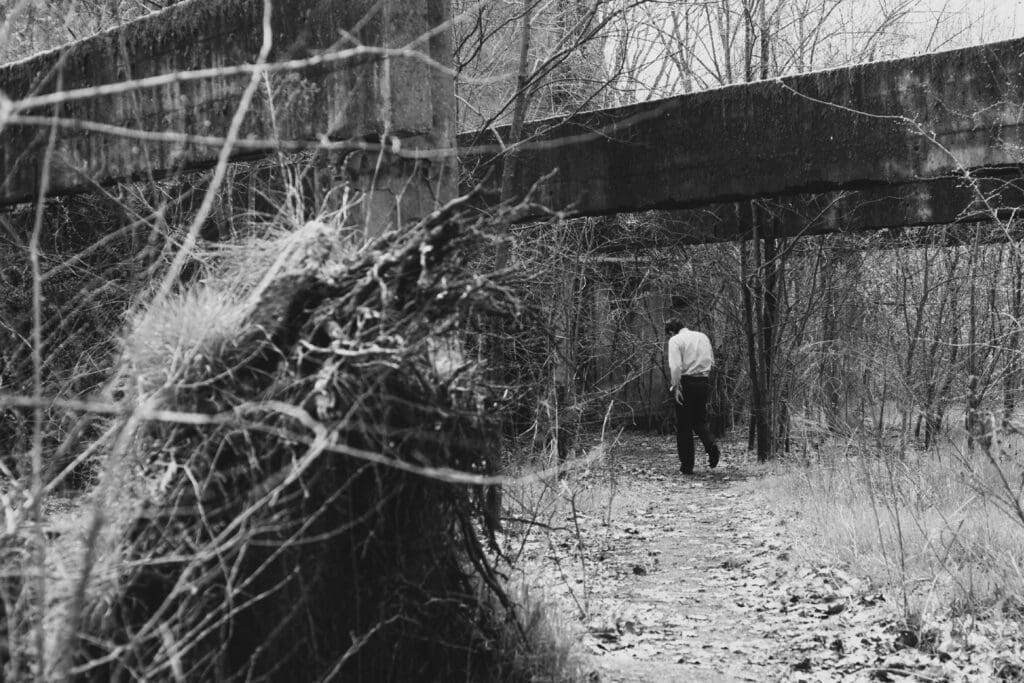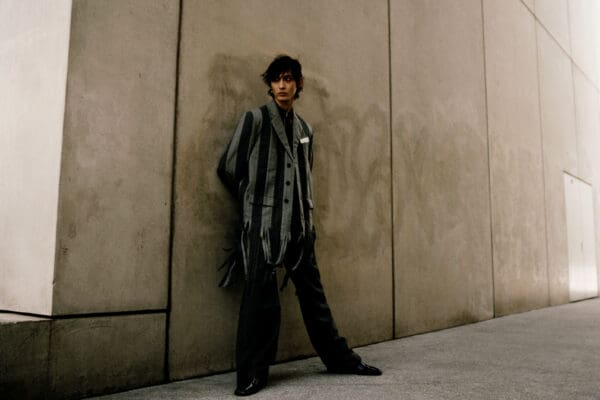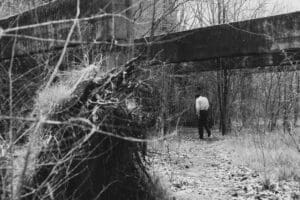by TARAJIA MORRELL
photography ZACHARY ZAVISLAK
1.4
I grew up in a family that had sheep as pets. Annabelle and Christie were before my time, though their wool made eponymous plaid blankets that kept us cozy. “You look chilly, would you like to put Annabelle over you?” was a common question at my grandparents’ house. Christie’s son, Chico, was the reluctant object of my toddler affection. I marveled at his black velvet muzzle, his long, brown, bottom-jaw teeth that chomped grass in perpetuity; his matted fleece, to which yellow straw stuck like Velcro. I enjoyed the wet wool smell of his fusty coat, the shade of his pen in summer and its surprising warmth in winter. I wanted to be friends with him, to rub my small nose against his dark downy one and breathe in his hay breath. I wanted to examine his cloven hooves with my four-year-old hands.
Chico, however, didn’t share my desire for intimacy, and at my first un-chaperoned approach, head-butted me square in the chest, sending me flying, winded and shocked, to the other side of the driveway like a crumpled tin can. Though I was more alert in my future dealings with Chico, this experience in no way deterred my adoration of animals.
I curled up on dog beds with Retrievers. I adopted barn kittens that became city cats. I convinced my mother to let me care for the school’s rabbits over the summer and watched them hop blissfully around our urban terrace. I became an obsessive rider of uniformly “complicated” horses, which despite occasionally bucking me off or leaving pear-sized bruises on my teenage arms, did eventually let me rub my nose with theirs and breathe in the glorious grass-grainy air that flows warm and soft from their silken nostrils. My best friend and I, mosquito-bitten, bramble-scratched and freckle-faced, followed the dusk’s lightning bugs to the pasture across the street where we communed with the cows.
And the whole time I ate meat.
Standard childhood meals in my epicurean home were roast chicken with root vegetables and red-wine jus, lamb chops with chutney and sautéed apples, and swordfish with Dijon mustard and capers. In the 1980s, my mother, astonished when confronted by the reality of how calves were raised (crated in tiny wood boxes to restrict their movement, hay-barren lest they eat any fibrous straw on which they might lie down—if they had been able to lie down; raised on a force-fed diet of hormone-laden milk-substitute to fatten them and make their meat white), stopped serving me veal piccata and calf’s liver. Past that solitary abstinence we continued to be carnivorous gourmets who enjoyed eating meat, albeit amid an abundance of vegetables.
*
In 2011 I delved deeper into my gastronomic predilections and took a cooking class. I learned to truss and quarter a chicken, to shuck oysters, to make the mother sauces. While waitressing at The Breslin Bar and Dining Room, April Bloomfield’s nose-to-tail New York City restaurant, I learned how to carve (and behead) a roast suckling pig while leaning over squealing investment bankers’ shoulders as they photographed the 23-odd pound beast’s crispy ears and the shriveled apple melting in its crooked teeth. I told guests about the bone-in, grass-fed rib-eye steak, dry-aged for 30 days, and assured them, when they balked at the price, that it would change the way they think about spending money on meat. They agreed every time: it was worth it.
*
I decided to make rabbit for an upstate summer dinner party and, with my laptop propped on the windowsill, taught myself to break one down from a YouTube video. As I butchered the rabbit, my mother retired from her own kitchen, handkerchief over her nose, muttering something about our sweet summer vacation bunnies, Max and Maxine, only to reappear once the rabbit had become dinner: formless and herb-fragrant, surrounded with garden greens beside summer borscht.
My mother had always refused to cook rabbit at home, though she reluctantly enjoyed a good hare terrine laced with wine-soaked berries, or a confited leg, crisp and delicate, in a restaurant. Understandably, and like so many of us, she didn’t want to be confronted by the supposed duplicity of her stance: her adoration of animals and her noshing on their comestible bounty.
As I slowly, imperfectly, came to understand that rabbit’s physicality—with my eyes, with my hands, and with my knife—my respect for it grew. That it was not some abstract, impersonal fillet or limb pushed me to connect with the animal and contend with the reality of what it meant for me to eat it.
Amid this tentative initiation, my current perspective cemented: I didn’t want to eat meat that came from sources unknown—in other words, I wanted to be on more personal terms with my food than simply opening my mouth and inviting it in. I wanted to ask questions, to close the desensitizing gap between the rabbit and me. I loved the rabbit. Not because it wiggled its whiskered nose at me or lay on its side, relaxed against my thigh, but because it would satisfy a need: hunger.
*
Why do we distance ourselves so much from what we eat? After all, if we “are what we eat” then doesn’t that make us out of touch with ourselves? If we avoid the truth—that in order to eat meat a sentient being must die—then we are shaming our desires and are much more likely to turn a blind eye to the reality of how that meat is raised.
The bulk of us who are aware of factory farming procedures are desirous of better, more humane husbandry and slaughtering practices—yet often even those who can afford to choose a better paradigm continue to support a torturous and unsustainable system through our buying practices. Why are some of us afraid of the parts of ourselves—appetites, instincts, habits—that make us carnivores, when these can work in tandem with our softest parts, those that make us loving, gentle and protective?
I wanted to embrace both sides, so I set out to do a “pasture to plate” story—words that perhaps have more immediacy than “farm to table.” I sought to close the gap between the creatures that we find enchanting and the abstracted, delicious, sustaining manifestation of these animals on the plate. I wanted to look my dinner in the eye and explore the paradox that loving animals can absolutely mean eating them too, not with bloodlust but with considered, profound gratitude.
We would photograph some livestock. We would slaughter them. I would eat their meat. I would write about what that was like—with the presumed “heightened awareness” of knowing an animal, even just briefly, before ingesting it.
However, even a simple plan can be complicated to execute, and not because I am squeamish. Our photo shoot did not coincide with the right time to slaughter a lamb, so instead I followed farmer Jeremy Peele of Herondale Farm in Ancramdale, New York, to his hilltop field to lure a two-month-old lamb away from the herd. Peele carried an oversized baby bottle that I’d watched him fill with a liter of Ronnybrook Farm milk. As we let ourselves into the field, he began to call, “Lambies! Lambies! Come and get some milk!” Though most of the White Dorper sheep were wary of us, four lambs that had been abandoned by their mothers at birth, and bottle-fed, came cantering up. After their first taste of the sweet, cold milk, they climbed us, as though we were ladders, trying to get more. I couldn’t resist: while one drank greedily from the bottle, I let another suck on my index finger. It was an intimate exchange.
“I don’t name them,” Peele offered when asked how he stops himself from bonding with the livestock, though frankly that seems a weak remedy against affection. The pride he takes in returning to an older model of farming, where nature and instinct dictate the livestock’s diets and activities, is evident in everything we see at his ranch. You’d be hard-pressed to encounter such happy, peaceful animals. They exude pleasure and serenity. At Herondale, cows graze on their preferred diet of grass and saunter slowly up verdant hills that help their muscles and joints develop. Their minds are clearly at rest as they do just what they are meant to do: eat (pesticide-free) grass, swat flies with their tassel tails, drink gallons of water every day, make calves, milk and moo. That this sensible, simple paradigm has become an exception and not the standard is atrocious.
A male lamb that had been bottle-fed was cooperative and let us photograph him as he stood before a black backdrop, docilely posing like the mystic lamb in the Ghent Altarpiece. We would not sacrifice him on that day. We would only adore him. A cousin of this lamb had been slaughtered a few days prior and later that afternoon I would eat its meat.
*
At Fish & Game restaurant in Hudson, New York, chef Zak Pellacio smoked the meat of a four-and-a-half-month-old lamb, wrapped it in grilled ramp leaves, and served it with potato purée, radish and ramp kimchi. As I ate it, I challenged myself, with an intensified consciousness, to think about the lambs I had embraced that morning.
I was grateful these lambs had been raised as they had.
Completing the strange circle that began with the lamb sucking my finger, I relished their tender, smoky meat, but was keenly aware that the animal I was eating had died for my pleasure.
Had I been charged with slaughtering that lamb, my rationale that it would die regardless of whether or not it was I who “pulled the trigger,” would have comforted me slightly, but it would not have been easy . . . nor should it be.
Even farmers and employees at abattoirs can find this aspect of their jobs challenging. I want the animals that I invite into my mouth to be raised by farmers who don’t find killing easy. Those are the farmers who will be that much more invested in the wellbeing of the livestock throughout their lives.
The gap was closing: I knew my meal better and the compression of life—the soil, the lamb’s, the farmer’s, the chef’s, mine—that became flavors in each bite tasted strong and clean. As Patrick Martins, founder of Heritage Foods and huge proponent of the Slow Food movement, so adroitly states, ”What could be more intimate than putting something in your mouth?”
*
After Herondale we went to Fish & Game Farm, the working farm owned by Patrick Milling-Smith, Pellacio’s partner in his restaurant. This farm, too, was idyllic: the birds lived in a trailer-size coop on wheels that could be towed to areas of untouched grass on which to feed. The chickens found bugs and seeds in the grass; they ate compost from the garden and kitchen; they ate oyster shells for calcium and to harden their eggs. The birds were relaxed and trusting and had their choice of sunny, fresh air or protection inside a clean, dry coop.
Here our timing was more apt: an older hen was going to meet her end and the farmer would let us be present to observe and document it. A folding plastic table was set up near the tree line, where a metal “kill cone” was attached to a board: a modern guillotine. I explained to the farmer that I wanted to photograph the New Hampshire Red hen alive, and, as we tinkered with our toys—our backdrops, our light stop settings—the farmer turned to me and said somberly, “Look, I have no problem killing this chicken, she’s old and has lived a good life. But this—the portrait of her right before we slaughter her—this isn’t right. I don’t feel good about this.”
It was an irrefutable truth: what could be more exploitive than a portrait just before an execution, and moreover, forcing a stressful moment just before taking the hen’s life? My intention had been to document what a chicken’s life could and should look like, not create trauma for it.
Our hen was letting the farmer stroke her where her wings met her back as we snapped a quick photo. The farmer lifted her gently, taking her two legs in one hand and turned her upside down, relaxing and elongating her. He lowered her into the kill cone head first, and with a swift and precise movement of his knife through her mouth, rendered her insensible before cutting her throat. We experienced the legendary convulsing, the firing of post-mortem nerves as the bird bled out into a waiting white bucket. When the hen was still and completely drained, the farmer lowered her into boiling water for a few seconds to loosen her feathers, and together we plucked them off easily. As the farmer began to disembowel the bird, his fingers met a firm wall inside of her: a perfectly formed egg was waiting within her cavity, not yet laid, and past that were several other yolks without albumen or shells—a solar system of potential life.
As the farmer gutted the hen, a slick, iridescent interior world of viscera was revealed on the plastic folding table. Emerald green, rich golden yellow, purple and pink—a prism inside such a little creature had the unexpected effect of making me feel very small. Naturally, the sight of these mysterious entrails did not make me hungry. Yet, later that day, as I tasted what this bird had become in chef Pellacio’s capable hands, I was bowled over by wonder at man’s ability to adapt the necessity of nutrition into the art form of cooking and eating. As I ate his chicken ballotine with an egg and asparagus chiboust, I recognized that ingesting such beauty—the life it sprung from and the dish that celebrated that life—was a privilege.
*
If everyone starts with the tool of curiosity and then expands it into collective awareness, I think we’d be well on our way to a more sustainable model, whatever that might actually look like.





